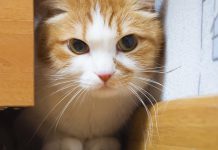Cats are among the most popular pets of all time, only after dogs. They are utterly cute, fluffy and serious indifferent creatures you would meet. They love to live by themselves and rarely invite your attention unless you have pissed them off and they must claw your face. So, yeah, if you keep aside their no-nonsense attitude, cats are adorable creatures.
Lately, we have come across a peculiar penchant for petting dangerous species of cats. While we do not wish to interfere with your decisions, but you need to be extra careful if you pet one of those cats which are considered highly dangerous.
Now that we have raised the topic anyway, it would not hurt if you look into 7 dangerous cats which should not be won as pet—but if you happen to be the venturesome type, we will not stop you from getting them.

1. Servals
Wild Servals are really dangerous, but surprisingly, they are quite commonly petted cats in the Savannah region. Usually, servals are placed in captivity and tagged as “Cheetahs†because of similarity in markings with that of the cheetahs.
If you are planning to get a serval for yourself, you can go ahead since they do not attack humans; they prey on smaller creatures such as rodents and birds.
2. Geoffroy’s Cats
Geoffroy’s Cats, if you did not know already, are the smallest wild cats in the world, with a maximum weight of just about 8 pounds. Because of their small size and less weight, they make up as excellent pets; however, their numbers are dwindling and that makes them expensive.
Geoffroy’s cats are anxious beasts and hate noises. They will quickly become aggressive when placed in a chaotic situation. So, if, indeed, you are going to pet them, give them peace as much as possible.
3. The Canadian Lynx
The Canadian Lynx is a quite beast and prefers to stay in isolation. Historically, their chemistry with humans has been cordial; however, they do not like walking too much as other big cats you know. So, you might not have those hangouts as frequently as you might be expecting.
One thing you should know about these cats that they have a strong proclivity towards climbing and thus, they need a lot of space. To own them, you need to give them their personal space; otherwise, these cats are not so ferocious and dangerous.
4. Caracals
Caracals share a lot of similarities with Servals, but they have a more tempered attitude than Servals and do not find it difficult to live like housecats. The only issue with Caracals is that when fully grown, they can put on as much as 50 pounds which makes them dangerous for small children.
Caracals are affectionate beasts, but their interactions are limited and in accordance with their terms and conditions. They can be costly to raise a lot of money will go into feeding them—they need to eat as much as three pounds of meat every day.
5. Pixiebobs
We totally get it—the name is cute, and to be honest, these cats are not as dangerous as the ones mentioned above.
Pixiebobs are basically domestic cats which are usually bred with other local cats. They might remind you of bobcats, but they are safer than actual bobcats; however larger than usual housecats you might get. Thus, due to their relatively large size, they require more space.
Pixiebobs have an affectionate temperament and mingle with humans quite well. So, you can go ahead with them as long as you do not compromise on their needs.
6. Bobcats
Now that we have already mentioned bobcats, let us not miss them out. Bobcats have a really bad reputation, but many people still keep them as housecats. While they can be adorably affectionate towards humans, and strangely, to dogs, they can kill an adult human and must be kept away from kids.
Bobcats are tamed in captivity, and that is how things should be unless you are an expert at taming bobcats. It is up to you to decide whether you want them as your pets, but please mind your safety—they can kill you!
7. Savannahs
Savannahs are wild enough to not be kept as housecats. These are usually bred with African Servals, and despite years of domestication, they might still turn out to be dangerously wild. In case you are thinking of getting a Savannah, you should check with your local government since petting a Savannah is not legal in many countries.












